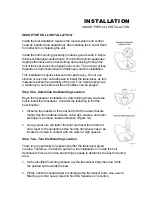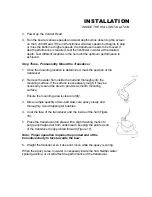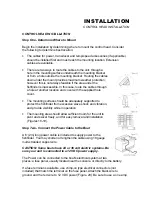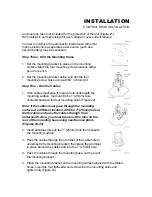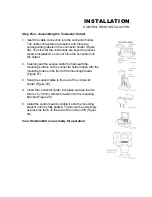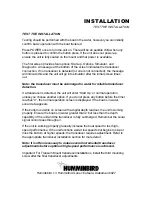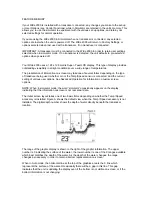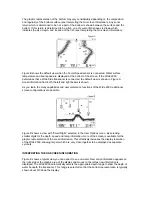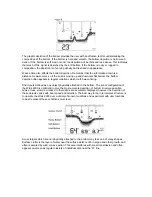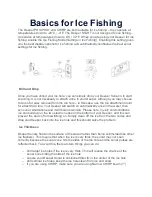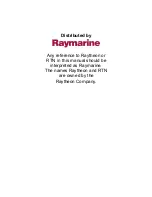
Thermoclines are sharp differences in water temperature. These are easily identified by the
continuous nature of the return. When a sonar signal is reflected off the bottom back to the
transducer, there is often enough energy left in the signal to be reflected off the surface of the
water back to the bottom a second time. Second returns appear as a slightly weaker bottom
representation exactly twice the depth of the primary bottom return. The second return is most
likely to occur in shallow water and in areas of relatively hard bottom.
The Wide 2000 uses advanced signal processing to further evaluate any sonar return between
the surface and the bottom. For instance, a small school of bait fish usually appears as a dense
cluster of individual dots. If the return meets certain additional criteria, a fish symbol will be
assigned. There are three different size fish symbols used to indicate the intensity of the sonar
return. While signal intensity is a good indicator of relative fish size, different species of fish have
different sonar characteristics, so it is not always possible to distinguish fish size between varying
species.
The signal intensity is “normalized” for depth so that a small fish close to the boat does not
appear as a large fish symbol. A further method of differentiation of fish symbols indicates which
of the three sonar beams the fish is detected in. This gives you a reliable indicator of side to side
location relative to boat movement. Fish symbols which are hollow are detected in the outside two
beams. Hollow fish symbols facing to the right are detected in the right beam and therefore are to
the right side of the boat (as viewed from the driver seat facing forward). Hollow fish symbols
facing to the left are detected in the left beam, and thus the fish is to the left side of the boat. Solid
fish symbols represent fish which are detected in the single center beam, and these fish are
directly under the boat.
Summary of Contents for Wide 2000
Page 1: ......

